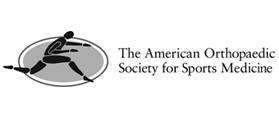Shoulder
Normal Anatomy of the Shoulder Joint
The shoulder is the most flexible joint in the body making it the most susceptible to instability and injury. It is a 'ball-and-socket' joint. A ‘ball' at the top of the upper arm bone, humerus, fits neatly into a 'socket’, called the glenoid, which is part of the shoulder blade, scapula.
For more information about Normal Anatomy of the Shoulder Joint, click on below tabs.
Shoulder Instability
Shoulder instability is a chronic condition that causes frequent dislocations of the shoulder joint.
For more information about Shoulder Instability, click on below tabs.
Rotator Cuff Tear
Rotator cuff is the group of tendons in the shoulder joint providing support and enabling wider range of motion. Major injury to these tendons may result in tear of these tendons and the condition is called as rotator cuff tear.
For more information about Rotator Cuff Tear, click on below tabs.
Frozen Shoulder
Frozen shoulder, also called adhesive capsulitis is a condition characterized by pain and loss of motion in shoulder joint. It is more common in older adults aged between 40 and 60 years and is more common in women than men.
For more information about Frozen Shoulder, click on below tabs.
Shoulder Impingement
Shoulder impingement is the condition of inflammation of the tendons of the shoulder joint. It is one of the most common causes of pain in the adult shoulder.
For more information about Shoulder Impingement, click on below tabs.
Clavicle Fracture
Clavicle fracture, also called broken collarbone is a very common sports injury seen in people who are involved in contact sports such as football and martial arts as well as impact sports such as motor racing.
For more information about Clavicle Fracture, click on below tabs.
Shoulder Arthroscopy
Arthroscopy is a minimally invasive diagnostic and surgical procedure performed for joint problems. Shoulder arthroscopy is performed using a pencil-sized instrument called an Arthroscope.
For more information about Shoulder Arthroscopy, click on below tabs.
Shoulder Joint Replacement
The shoulder is a highly movable body joint that allows various movements of the arm. It is a ball and socket joint, where the head of the humerus (upper arm bone) articulates with the socket of the scapula (shoulder blade) called the glenoid.
For more information about Shoulder Joint Replacement, click on below tabs.
SLAP Repair and Bicep Tenodesis
A SLAP repair is an arthroscopic shoulder procedure to treat a specific type of injury to the labrum called a SLAP tear.
For more information about SLAP Repair and Bicep Tenodesis, click on below tabs.
Bankart and Labral Repair
The shoulder joint (glenohumeral joint) is a ball and socket joint, where the head of the upper arm bone (humerus) attaches to the shoulder socket (glenoid cavity).
For more information about Bankart and Labral Repair, click on below tabs.
Shoulder Fractures
The shoulder is the most flexible joint in the body, enabling a wide range of movements. It is a ball-and-socket joint made up of three bones, namely the humerus (upper arm bone), scapula (shoulder blade) and clavicle.
For more information about Shoulder Fractures , click on below tabs.
Click on the topics below to find out more from the orthopaedic connection website of American Academy of Orthopaedic Surgeons.
- The Shoulder
- Arthritis of the Shoulder
- Broken Collarbone
- Dislocated Shoulder
- Fracture of the shoulder blade (scapula)
- Frozen Shoulder
- Rotator Cuff Tears
- Separated Shoulder
- Shoulder Impingement (Bursitis, Tendinitis)
- Shoulder Joint Replacement
- Shoulder Joint Tear (Glenoid Labrum Tear)
- Thoracic outlet syndrome
- Shoulder Arthroscopy







